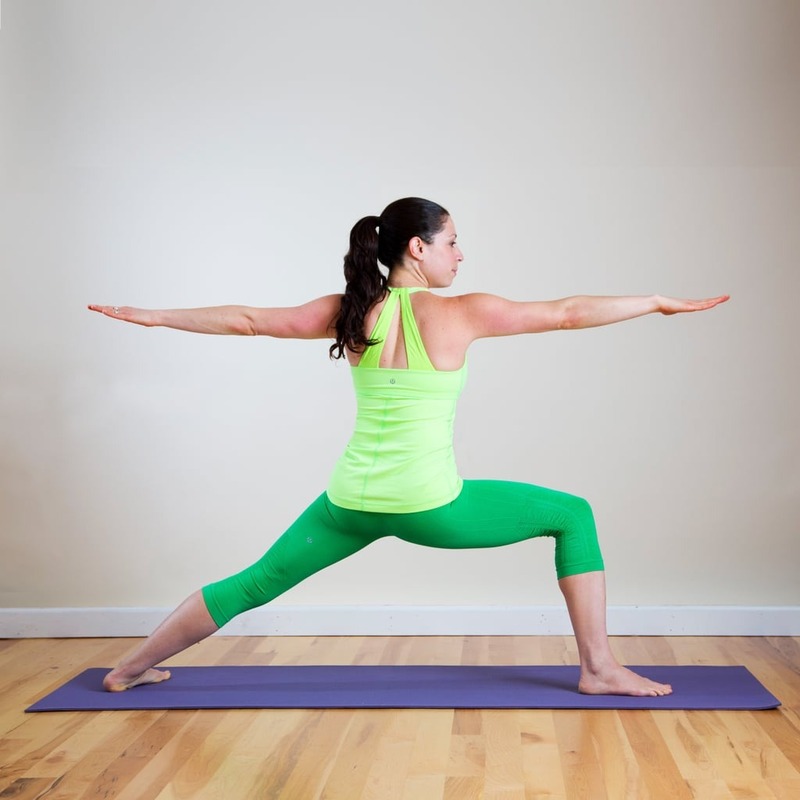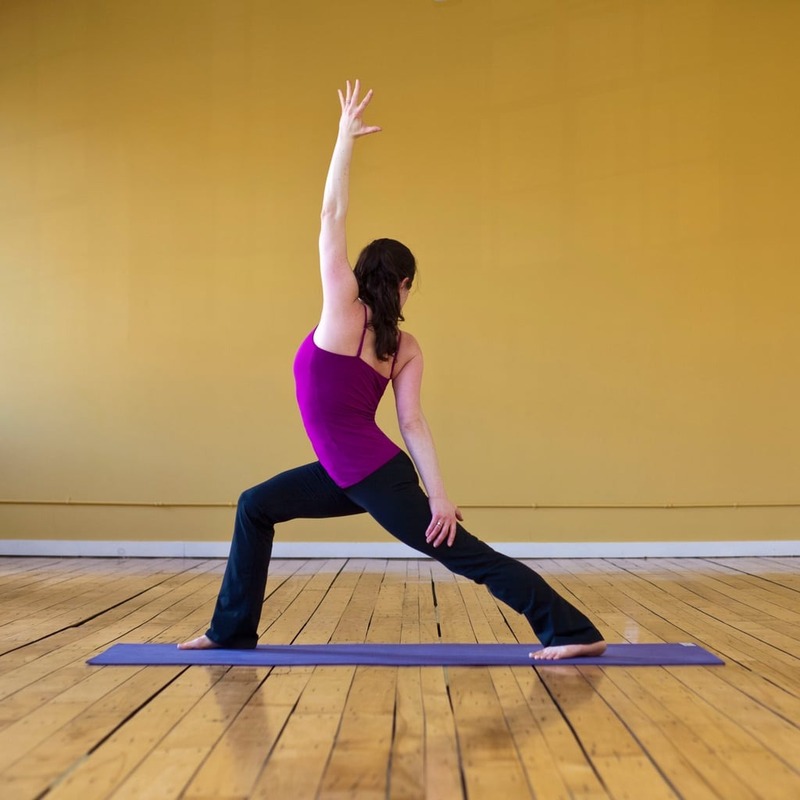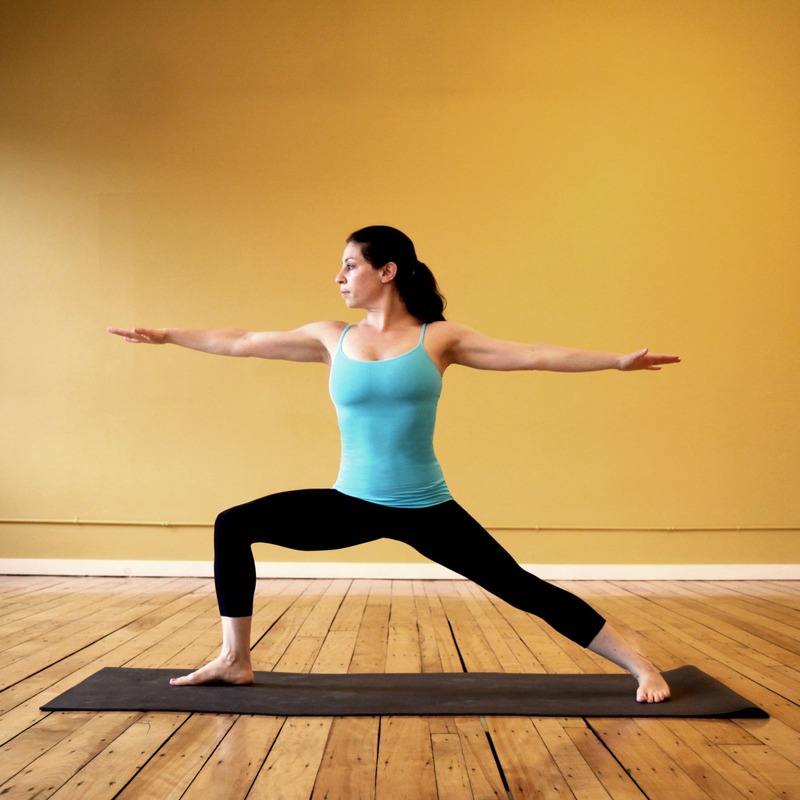Introduction to Warrior Poses
Yoga Warrior Pose, known as Virabhadrasana in Sanskrit, are key to building strength and grace in a yoga practice. These powerful, standing poses embody the strength and courage of a mythical warrior they’re named after. Incorporating Warrior Poses into your routine can enhance your endurance, balance, and focus.
There are several variations of the pose, each serving unique benefits. As you flow from one Yoga Warrior Pose to another, you work various muscle groups, stretch different parts of the body, and invite mental tenacity. Warrior Poses are not just physical workouts; they also promote emotional resilience and mental clarity.
Yoga practitioners of all levels can perform these poses with modifications if needed. They’re foundational to many yoga sequences and are often included in Vinyasa flows and Hatha yoga sessions. Start by learning the basic forms of Warrior I, II, and III, then progress to more challenging variations like Humble or Reverse Warrior.
Let’s explore these poses, starting with their historical significance, moving through each variation, and diving into their step-by-step instructions and benefits. Pay attention to proper alignment to get the most out of each pose while minimizing the risk of injury.
The Origin and Significance of Yoga Warrior Pose
The history of Yoga Warrior Pose is deeply rooted in Hindu mythology. Stemming from the Sanskrit term ‘Virabhadrasana’, these poses honor ‘Virabhadra’, a fierce warrior incarnate of the god Shiva. Legends recount Shiva’s creation of Virabhadra to avenge his wife Sati’s death.
Yoga Warrior Pose serve to empower. They fuse physical strength with emotional and mental endurance. These poses encourage the yoga practitioner to stand tall against life’s challenges. In body, they foster strength and stability. In spirit, they symbolize resilience, focus, and a warrior-like courage.
By practicing Yoga Warrior Pose, one embarks on a journey that transcends mere physicality. It becomes a metaphor for overcoming personal battles. Through the elegance of movement and the steadiness of stance, a story unfolds on the mat. It’s a celebration of overcoming ego and ignorance, as embodied by the ancient warrior Virabhadra.
Thus, the significance of Warrior Poses in yoga goes beyond their physical benefits. They are steeped in history and imbued with deep philosophical meaning. When one adopts the Virabhadrasana, they are not just assuming a position; they are embracing the tenacity and grace of a storied warrior.

Warrior I Pose: Virabhadrasana I
Warrior I Pose, known as Virabhadrasana I, showcases strength, focus, and determination. This foundational pose provides a range of benefits and serves as a cornerstone for more advanced asanas. It’s vital to approach the pose with respect to alignment to harness its full potential. Here’s your step-by-step guide to mastering Warrior I, along with insights into its numerous benefits.
Step-by-Step Guide and Benefits
- Begin in Mountain Pose (Tadasana) with feet together and arms at sides.
- Step or jump feet wide apart, about four feet.
- Turn your right foot out 90 degrees, aligning your heel with the left foot’s arch.
- Rotate your torso to the right, squaring your hips as much as possible.
- Inhale and raise your arms overhead, palms facing or touching, while drawing shoulders down.
- Exhale and bend your right knee over the right ankle. Keep the left leg straight and strong.
- Direct your gaze up, towards the hands, maintaining a steady breath.
- Stay grounded through the feet, engaging core and legs.
- Hold the pose for 5-10 breaths, deepening with each exhale.
- To exit, press into the feet, straighten the right leg and lower arms.
- Turn feet forward and step back to Tadasana.
- Repeat on the left side.
Benefits: Warrior I builds leg strength, improves flexibility in the hips and shoulders, and energizes the entire body. It encourages good circulation, respiratory function, and strengthens concentration. The pose also helps develop endurance and stamina both mentally and physically.
Warrior II Pose: Virabhadrasana II
Warrior II Pose, or Virabhadrasana II, invites stability and concentration. This grounding pose enhances your balance, energizes the body, and sharpens focus. Let?s explore how to correctly execute Warrior II and understand its wide-reaching advantages.
Step-by-Step Guide and Benefits
- Start in Mountain Pose, with your feet together.
- Step feet apart, roughly four feet in distance.
- Turn right foot out, about 90 degrees.
- Align your right heel with your left foot’s arch.
- Face torso right, making hips as square as possible.
- Inhale, lift arms to shoulder height, parallel to the floor.
- Turn palms down, draw shoulder blades towards each other.
- Exhale, bend right knee over the ankle.
- Keep left leg strong and straight.
- Focus gaze over right hand, breathe steadily.
- Feel grounded, yet ready to move, like a warrior.
- Hold for 5-10 breaths, feeling strength and stretch.
- Exit by straightening right leg, lowering arms.
- Turn to face front, move back to Mountain Pose.
- Repeat on the opposite side, left leg forward.
Benefits: Warrior II strengthens thighs, ankles, and hips. It stretches and opens the chest, lungs, and shoulders, aiding respiration. The pose also enhances stamina and relieves backaches. Practicing it promotes deep focus and mental resilience. Plus, it helps improve digestion due to the activation of abdominal muscles.
Warrior II is about balance and endurance, standing firmly while looking ahead. It’s as much a mental exercise as a physical one. Doing this regularly can lead to stronger, more toned muscles, and a calm, centered mind.
Warrior III Pose: Virabhadrasana III
Warrior III Pose, Virabhadrasana III, demands balance, focus, and strength. It challenges your ability to remain composed while aligning your body into a straight, horizontal line. This pose is a testament to the warrior theme, emphasizing the balance of strength and grace. Here’s how you can master Warrior III, along with its significant benefits.
Step-by-Step Guide and Benefits
- Start in the Mountain Pose (Tadasana).
- Place your hands on your hips.
- Step one foot back, keeping your balance.
- Lean forward, lifting the back leg up.
- Reach your arms forward or to the sides.
- Make your body parallel to the ground.
- Keep your hips square and back leg active.
- Focus your gaze on a point for balance.
- Hold for 5-10 breaths, finding steadiness.
- Gently return to Tadasana and switch sides.
Benefits: Warrior III strengthens your legs, tones your abdomen, and improves balance. It sharpens focus and concentration. The pose stretches your hamstrings and fortifies back muscles. Practicing Warrior III leads to better posture and poise. It also stimulates the core, helping with digestion and metabolism.

Humble Warrior Pose: Baddha Virabhadrasana
Humble Warrior, also known as Baddha Virabhadrasana, is a deep forward bend combined with a hip opener. This pose requires both flexibility and strength, offering a profound stretch for the shoulders, chest, hips, and thighs. It adds a level of humility and surrender to the Warrior sequence, encouraging emotional release and a moment of introspection.
Step-by-Step Guide and Benefits
- Begin in Warrior I with your right foot forward.
- Clasp your hands behind your back. Stretch your shoulders.
- Exhale, hinge at the hips to fold forward inside the right thigh.
- Lower your shoulder towards the right knee, hands reaching overhead.
- Keep both feet firmly planted and hips squared to the front.
- Hold for several breaths, allowing a deep opening in the upper body.
- To exit, use your core to lift back into Warrior I.
- Repeat on the left side.
Benefits: This pose strengthens and stretches the legs and ankles. It opens the hips, chest, and shoulders. Humble Warrior can improve balance and focus. It may encourage a sense of peace and help in releasing tension from the body.
The Humble Warrior Pose, with its emblematic bow, teaches grace in strength and surrender. It’s a powerful addition to any yoga practice, infusing each session with depth and character.
Reverse Warrior Pose: Viparita Virabhadrasana
Reverse Warrior Pose, or Viparita Virabhadrasana, combines strength with flexibility. This graceful posture stretches the side body and strengthens lower limbs. Understanding proper technique is key for reaping the full advantages of the pose.
Step-by-Step Guide and Benefits
- Begin in Warrior II with your front knee bent.
- Drop your back hand to rest on your back leg.
- Inhale and lift your front arm skyward, palm facing down.
- Lean back gently, forming a slight arch in your upper back.
- Keep your front knee stable over your ankle.
- Turn your head to gaze up at your lifted hand.
- Deepen the stretch with each exhale, maintaining firm legs.
- Remain in the pose for a few breaths, feeling the expansion.
- To exit, return to Warrior II and then to Mountain Pose.
- Perform the pose on the opposite side for balance.
Benefits: Reverse Warrior Pose opens the rib cage and lung area. It enhances spinal flexibility and strengthens leg muscles. The pose boosts stamina and energy. It also nurtures balance and focus. Practicing this pose can help reduce fatigue and calm the mind.

Precautions and Modifications for Yoga Warrior Pose
When practicing Warrior Poses, it’s crucial to be mindful of your body’s limits and take necessary precautions. Here’s a guide to help you practice safely with suggested modifications for different needs.
Safety Precautions
- Stay aware of your knee alignment to prevent strain or injury.
- If you have high blood pressure, avoid raising your arms overhead for long periods.
- For those with shoulder issues, keep your hands on your hips or in prayer position.
- If you’re recovering from recent surgery, consult healthcare providers before attempting.
- Practice on a non-slip surface to maintain stability and protect from falls.
- Avoid locking your joints to keep the flow of energy and avoid injuries.
Modifications for Yoga Warrior Pose
- Use a wall or chair for support if you struggle with balance.
- Place a yoga block under your hand in Warrior III for added stability.
- For tight shoulders, use a strap to hold your arms in position.
- Shorten your stance if extending fully causes discomfort or instability.
- Bend your back knee slightly if straightening causes back pain.
- For neck discomfort, maintain a neutral head instead of looking up or to the side.
Always listen to your body and modify poses as needed. Yoga is personal, and it’s more important to practice in a way that feels right for you than to achieve a ‘perfect’ form.
Incorporating Warrior Poses into Your Yoga Routine
Including Warrior Poses in your yoga routine brings many benefits. Here are some practical tips on how to effectively integrate these powerful poses into your practice:
- Start with Warm-ups: Begin your session with gentle stretching or a basic flow to prepare your body. This helps in loosening up the muscles and joints, making the transition into Warrior Poses smoother and safer.
- Progress Gradually: If you’re new to Warrior Poses, start with the basic forms of Warrior I and II. As you gain strength and flexibility, introduce more challenging variations like Warrior III or Humble Warrior.
- Focus on Alignment: Pay attention to your body alignment in each pose. Use a mirror or ask a teacher to check your posture. Proper alignment prevents injuries and ensures you gain the full benefits of each pose.
- Incorporate Breathing Techniques: Coordinate your movements with your breath. Inhale as you expand or stretch, and exhale as you deepen the pose. This enhances concentration and stability.
- Practice Regularly: Consistency is key in yoga. Try to incorporate Warrior Poses into your routine several times a week. This regular practice helps improve balance, strength, and flexibility over time.
- Use Props for Support: Don’t hesitate to use props such as blocks, straps, or a wall to help maintain balance and achieve proper alignment, especially in the more difficult poses.
- End with Cool-Down Stretches: After practicing Warrior Poses, always take time to cool down. Engage in stretches that relax your muscles and allow your body to gently transition out of the practice.
By incorporating these Warrior Poses into your yoga sessions, you’ll not only build physical strength and flexibility but also develop mental resilience and focus, essential qualities for any yoga practitioner.


